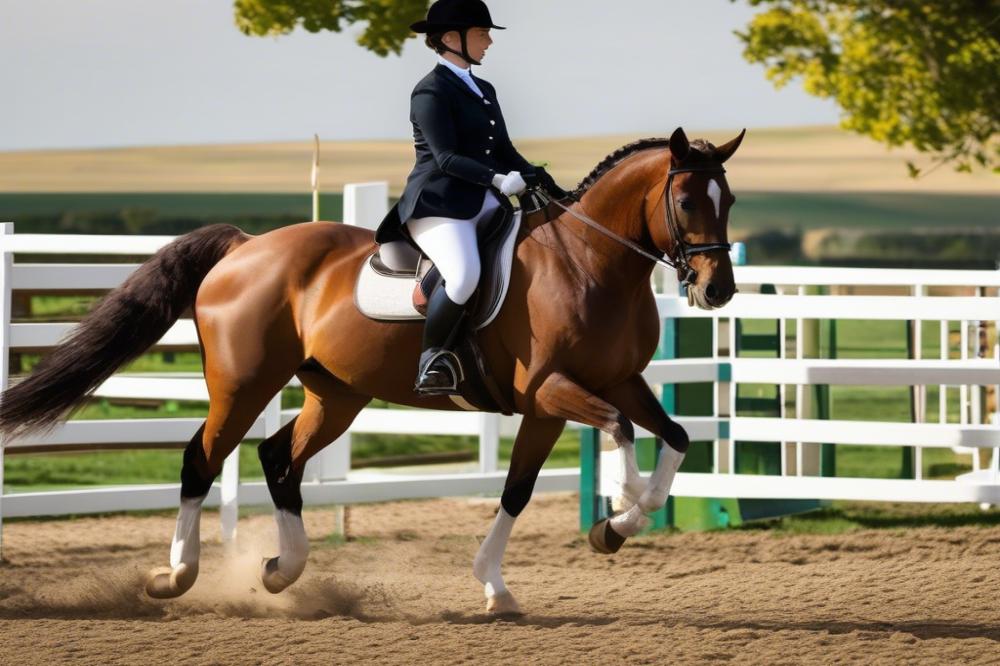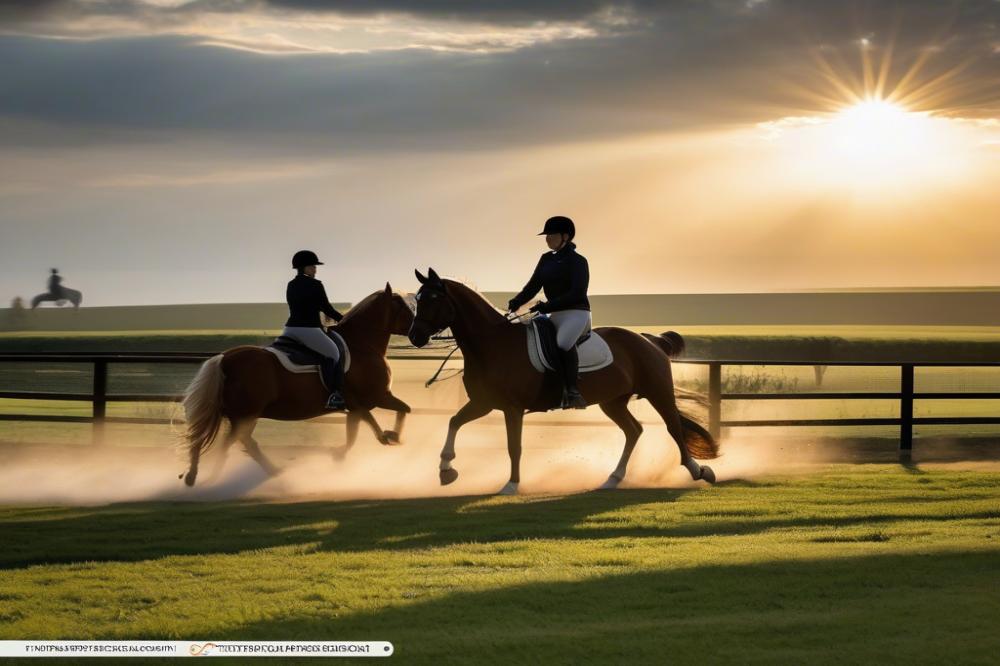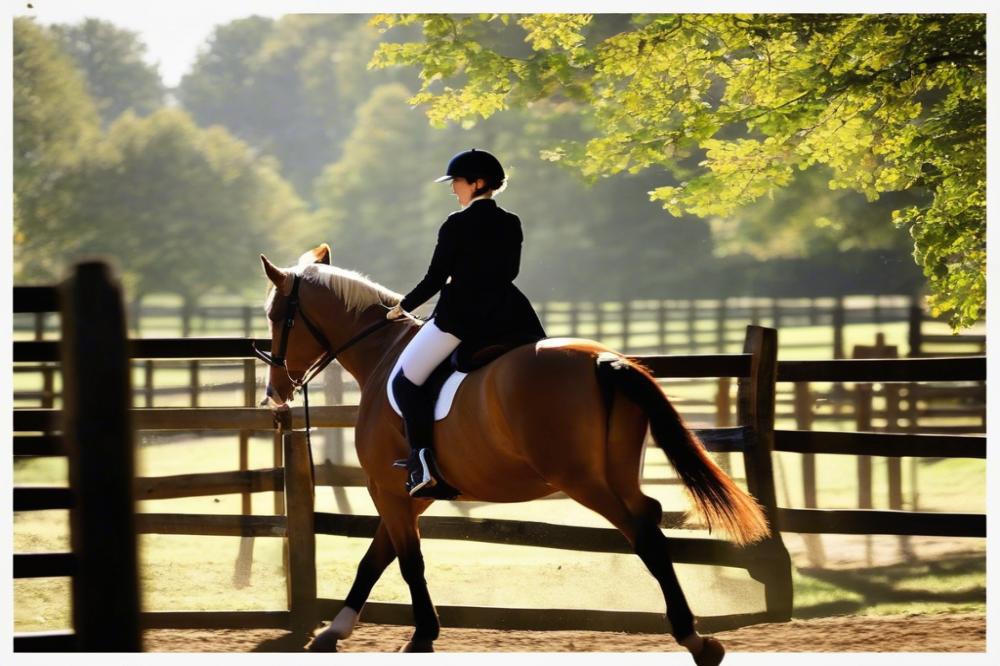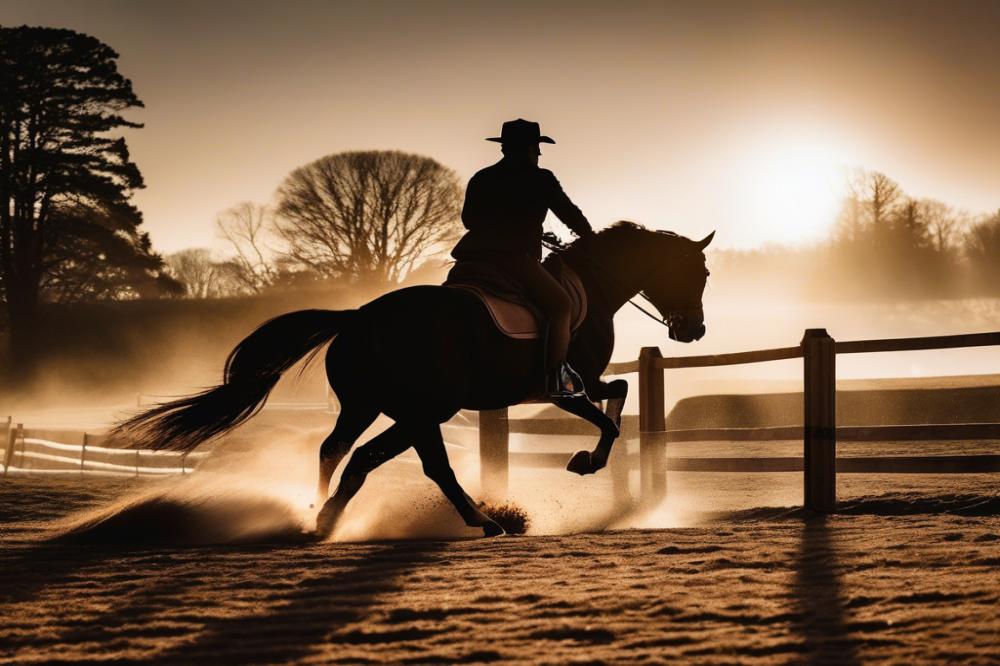Is Horseback Riding Good Exercise?
Have you ever watched a rider glide across a field, the sun glinting off the horse’s mane? It’s a sight to behold and a sport that many people genuinely enjoy. Horseback riding, also known as equestrian sport, is not just about looking good in a saddle; it can also offer significant horse riding benefits. From competing in events to simply enjoying a leisurely ride through a wooded trail, there’s more to this activity than meets the eye. That graceful bond between rider and horse is something special, and it’s rooted in deep tradition. These magnificent creatures have been our companions for centuries, assisting with work, travel, and even sport.
Exercise plays an essential role in our everyday lives, right? Whether we take long walks, jump into workouts at the gym, or chase after kids, we need movement to stay healthy. Engaging in physical activity helps our bodies stay fit, boosts our mood, and can even ward off various health problems. In today’s world, where screens often steal our attention, keeping active can sometimes feel like a chore. But what if you could ride off into the sunset while also benefiting your body? That’s where the exploration of horseback riding as a form of exercise comes into play.
Delving into equestrian health allows us to uncover a unique perspective on fitness. Think about it: navigating the dynamic world of horses and ensuring their wellness requires a fair amount of physical effort. Grooming a horse, caring for their coat, and performing necessary routines are not just tasks; they can be a workout wrapped in a good time! Horse riding routines might involve balancing, coordinating movements, and developing strength, much like some exercise programs, but they come with an exhilarating twist.
Throughout this article, we will examine the many facets of horse riding and how it contributes to physical fitness, emotional well-being, and overall exercise. Plus, we might just have a little fun along the way comparing different aspects of horse breeds, like the brabant horse vs clydesdale. These gentle giants have their own quirks and strengths, showcasing a diversity that parallels the kinds of benefits we gain from being in the saddle. So saddle up and let’s ride through this topic together!
Curious about how horseback riding can get your heart racing? Stick around as we journey further into the world of equine exercise and discover what makes this sport an exciting option for physical activity.
Benefits of Horseback Riding Exercise

Physical Fitness Benefits
Horseback riding is more than just a fun pastime. It offers a great way to stay active. Many don’t realize how much energy it takes to ride a horse. This activity gets your heart pumping and your body moving, which is essential for overall health. Engaging with horses allows riders to enjoy the outdoors while getting in shape.
Improvement in Balance and Coordination
Riding a horse demands good balance. Staying atop a moving animal challenges your stability in ways you might not expect. As you learn to guide the horse, your coordination improves, too. You mix subtle movements of the reins and your body to communicate with the horse. This creates a unique connection that enhances your riding skills and body awareness.
Strength Building in Core and Legs
When you ride, you engage your core muscles. This helps stabilize your body as the horse moves. Strong legs are crucial for effective riding, especially during turns or faster movements. You will find that your thighs and calves become toned from holding your position. Who knew horse care could lead to a mini workout for your muscles?
Cardiovascular Advantages
Have you ever felt your heart racing while galloping on a horse? That’s your cardiovascular system working hard! Engaging in horse riding routines means you are boosting your heart health. Over time, this activity can help improve circulation and increase endurance. It’s like running, but with a built-in friend!
Mental Health Benefits
Horseback riding does wonders for your mind, too. Spending time with these majestic creatures can lower stress and anxiety. The rhythmic motion of riding is calming, almost like meditation. You can escape daily worries as you focus on your equestrian fitness journey. Plus, bonding with a horse can create feelings of joy and fulfillment. Who wouldn’t smile after a good trot?
Types of Horseback Riding and Their Impact on Exercise

Western Riding vs English Riding
Western riding often feels more relaxed. The saddle is bigger, allowing more freedom of movement. Riders can sit back and enjoy the ride. This style is great for long rides, roping, and working with cattle. While it may not seem as intense, it still requires core strength and balance.
In contrast, English riding has a tighter saddle. Riders need to maintain a better posture. This style often emphasizes jumping and dressage. Riders engage their legs and arms more, which boosts equestrian fitness levels. Both styles offer horse riding benefits, but they do it in different ways.
Different Disciplines and Their Physical Demands
Each discipline has its own physical hurdles. Trail riding is a fantastic way to enjoy nature and exercise. Riders must navigate different terrains. You’ll use every muscle in your body to stay balanced during those turns and hills. Plus, galloping can certainly get your heart pumping.
On the other hand, jumping demands sharp focus and strength. It’s not just about leaping; it’s about preparing for each jump. This requires strong leg muscles and precise timing. Preparing the horse, known as horse care, is just as vital as the jumping itself.
Dressage is an art form. It’s slow and graceful, but don’t be fooled. It demands incredible balance and control. Riders must maintain a strong, steady frame to guide their horses. Much like dancing, both partners need to be in sync. Equestrian health benefits from this as it enhances flexibility and posture.
Trail Riding, Jumping, Dressage, and More
Trail riding offers freedom. Riders bond with their horses while exploring the great outdoors. Those winding paths can activate your legs, core, and even your heart. It’s a whole-body workout that doesn’t feel like one.
Jumping adds a twist of adrenaline. Leaning forward to clear a jump makes your muscles work overtime. Confidence grows with each leap. You learn to trust your horse, and it builds a relationship like no other.
Dressage is all about precision. The horse and rider perform intricate movements. This dance-like discipline is mentally and physically demanding. Muscles engage to maintain posture, balance, and rhythm. Riding routines become a workout in disguise.
In conclusion, no matter the discipline, equestrian fitness is significant. From the relaxed feel of Western riding to the elegance of dressage, each style contributes to a well-rounded exercise routine. Horse riding isn’t just fun; it’s beneficial for both horse and rider. Each experience offers valuable lessons in strength, balance, and connection.
The Mechanics of Horseback Riding

Posture and its Significance
Riding a horse isn’t just about sitting on its back. It requires good posture, which matters a lot for both the rider and the horse. Imagine trying to balance a tray of snacks while walking; that’s similar to what you need when riding. Keeping your back straight and shoulders relaxed helps you stay balanced. This relaxed position keeps you stable. Horses can feel the slightest movements and shifts. Bad posture can confuse them, making them feel unsure. Riders need to sit tall, as if there’s a string pulling them up from the top of the head. Having the right posture not only makes you look confident but also lets the horse perform better.
Engagement of Muscle Groups
Horse riding benefits many muscle groups. It’s a full-body workout, even if it doesn’t seem like it at first glance. Your legs help maintain grip and control, giving strength to your connection with the animal. Arms and shoulders play a role too, as they guide the reins and help communicate cues. For those who ride regularly, you might notice toned thighs and strong arms. It’s like a dance but with a much bigger partner! Each ride becomes an exercise in synchronizing with your horse. This engagement builds endurance and strength over time, proving that equestrian fitness is real, and it sneaks up on you pleasantly.
The Role of Core Muscles in Riding
The core muscles are often the unsung heroes of horseback riding. They provide stability, making it easier to shift your weight when the horse moves. Think of it as being the anchor while sailing through waves. A strong core allows riders to sit deep in the saddle, maintaining balance during unexpected bumps. Plus, it helps prevent soreness during those longer rides. Riding can be surprisingly taxing on the abs when you’re working hard to stay centered and keep control. Riders who focus on core strength tend to find improved coordination, making their horse riding routines even more efficient. Just like any sport, everything ties back to having a strong foundation. And let’s be honest, who doesn’t love a good reason to work on those abs?
Comparative Analysis with Other Forms of Exercise
How Horseback Riding Compares to Gym Workouts
Horseback riding offers a different experience compared to your typical gym workout. In the gym, people often lift weights or run on treadmills. Riding a horse, however, engages your entire body in ways that might surprise you. Balance and coordination take center stage as you adjust to your horse’s movements. While you might feel a burn during squats, there’s a unique challenge in maintaining your poise atop a saddle.
Gym workouts often stick to routines that can become repetitive, like bench pressing or cycling. Horse riding routines change with each ride. Outdoor trails, soft grass, or a bustling arena keep things fresh and exciting. You might even find yourself developing a bond with your horse. This connection adds a sense of enjoyment that gym machines can’t replicate.
Endurance vs Strength Training Activities
When you think about endurance, long runs or intense cycling might cross your mind. Yet, the endurance needed for riding is remarkable too. Long rides test your stamina, challenging both body and mind. You build strength through grip and core muscles, which are crucial when steering your horse.
Conversely, a heavy weightlifting session offers its own benefits. Strength training gets those muscle fibers pumped. In contrast, equestrian fitness promotes overall body strength, balancing muscle use rather than isolating one area. Riders often find that they have toned legs and strong backs because of holding posture while riding. Each activity has its perks.
Caloric Burn and Fitness Level Comparisons
Caloric burn can vary quite a bit between gym exercise and equestrian health. A high-intensity workout might torch calories quickly, but don’t underestimate what happens during horse riding. One hour in the saddle can burn between 200 and 600 calories. Those numbers easily compete with other exercises. Plus, riding works multiple muscle groups simultaneously.
As for fitness levels, both activities put you on the path to better health. Gym enthusiasts typically track their progress in measurable ways—weights lifted, miles run. Riders, on the other hand, see improvements in balance, flexibility, and even mental sharpness. Taking care of a horse requires attention and focus, expanding skills beyond just physical conditioning. Plenty of horse riding benefits spill into daily life, aiding in mobility and coordination.
In the end, whether you’re lifting weights or grooming a horse, both routes lead to fitness. Each one offers a chance to improve health. Plus, there’s something special about getting outdoors and enjoying nature, riding your horse along a scenic trail. So, why not saddle up and experience the journey first-hand?
Safety Considerations in Horseback Riding
When it comes to horseback riding, safety is as important as technique. Proper training can make a world of difference. Beginners often underestimate how crucial it is to learn the ropes. Whether you plan on trotting around the ring or galloping down a trail, having a solid foundation is essential. Skilled instructors can teach you the nuances of balancing and guiding your horse, which is key to staying safe while enjoying those horse riding benefits.
Importance of Proper Training and Technique
Imagine trying to ride a bike without knowing how to balance. It’s probably going to end badly! The same goes for horses. Learning how to position your body correctly helps you maintain control. Also, good technique means you can respond better if your horse gets startled. Practicing regular horse riding routines with a patient instructor reinforces your skills over time. This is not just about looking good; it’s about staying safe and enjoying equestrian fitness.
Helmets and Protective Gear
Now, let’s talk about gear. Helmets are not just a fashion statement; they are lifesavers! Wearing a well-fitted helmet helps protect your noggin if you take a tumble. Protective gear doesn’t end there, though. Consider boots with a heel to prevent your foot from slipping through the stirrup. Investing in quality riding gloves can improve your grip, which makes for a more comfortable ride. Just think of protective gear as your superhero armor—it’s there to keep you safe while you conquer new heights.
The Role of a Well-Trained Horse
How can we forget about the horse? A well-trained steed makes a world of difference in enhancing equestrian health. Trust and communication are essential between horse and rider. When your horse understands what you ask, rides become smoother and safer. Always remember, no matter how experienced you are, the horse also needs proper care and training. Equip yourself with knowledge about equine exercise to enjoy riding while keeping safety at the forefront.
Getting Started with Horseback Riding Exercise
How to Begin Horseback Riding
Diving into horseback riding is an exciting adventure that can be both fun and beneficial for your body. First things first, you need to find a place that offers riding lessons. Do some research online or ask around your community to discover local stables that cater to beginners. Many places provide a friendly environment, perfect for learning the ropes.
Start by looking for an instructor who has experience with new riders. A good teacher makes all the difference! Don’t be shy to ask them about their qualifications and what you can expect during your lessons. Safety is key, so chat about their approach to maintaining equine exercise and rider safety.
Finding the Right Instructor or Stable
Your instructor should feel approachable and understanding. Having someone who is patient and who communicates well is essential. You want to enjoy the horse riding experience while also improving your equestrian fitness. Consider visiting the stable before signing up. Seeing the horses, the facilities, and feeling the atmosphere can help you gauge if it’s the right fit.
Another tip? Ask about their horse care practices. Are the horses well-fed and happy? A well-cared-for horse is not only healthier but will also enhance your riding experience.
Tips for Beginners to Maximize Exercise Benefits
Utilizing basic warm-ups can greatly enhance your riding workout. Stretch a bit before getting on the horse. Simple exercises like arm circles or leg stretches can prepare your body for action. This helps prevent muscle strain and makes your riding session effective.
Pay attention to your posture while riding. Sitting up straight will engage your core muscles, which can provide a great workout on top of the fun. Learning proper balance is also important. Shift your weight as the horse moves. This not only improves your riding skills but also works out several muscle groups.
Start out with simple horse riding routines. Focus on walking and then gradually add in trotting. Each step forward will yield more horse riding benefits. As you progress, you can challenge yourself more and explore different riding styles. Just remember to listen to your body and go at your own pace.
Riding can be as beneficial as hitting the gym—who would have thought? With every ride, you’re not just making a bond with the beautiful animal beneath you; you’re also boosting your equestrian health. Embrace the journey, and don’t be afraid to laugh at yourself along the way. After all, life is too short to take too seriously, especially where horses are concerned!
Final Thoughts on Horseback Riding as Exercise
Horseback riding is more than just a fun way to spend a Saturday afternoon; it’s a fantastic way to boost your fitness while enjoying the great outdoors. When you saddle up, you engage various muscle groups. Your core strengthens as you balance, your legs tone from gripping the saddle, and your arms receive a workout as you guide the reins. Who knew you could break a sweat while riding into the sunset? The variety of movements helps keep things interesting, and let’s face it, nothing beats the feeling of freedom that comes from being on horseback.
It’s time to dust off those riding boots and give horseback riding a shot! It doesn’t matter if you’ve never been near a horse or if you’re an experienced rider. There is a place for everyone in the world of equestrian fun. If you ever wondered what the horse girl meaning is, it’s about that strong bond with horses. It’s about sharing adventures, feelings, and yes, some very real exercise. So why not saddle up and take it for a spin? You might just find a new passion.
Integrating horseback riding into your fitness routine can bring about a refreshing change. Instead of the usual treadmill, why not ride a gentle giant and trot through nature? With fresh air filling your lungs, it can be a delightful experience. Picture yourself on a peaceful trail, a gentle breeze flowing through your hair, and your new, mischievous pal—the horse—with a bit of a donkey personality now and then. Plus, you’ll have stories to share that go way beyond “I hit the gym today.”
So, as we wrap this up, remember that horseback riding isn’t just an exercise; it’s an adventure waiting to happen. Embrace the joy of being outdoors, challenge your muscles, and connect with these amazing creatures. So grab that cowboy hat, hop on a horse, and ride your way into fitness!



